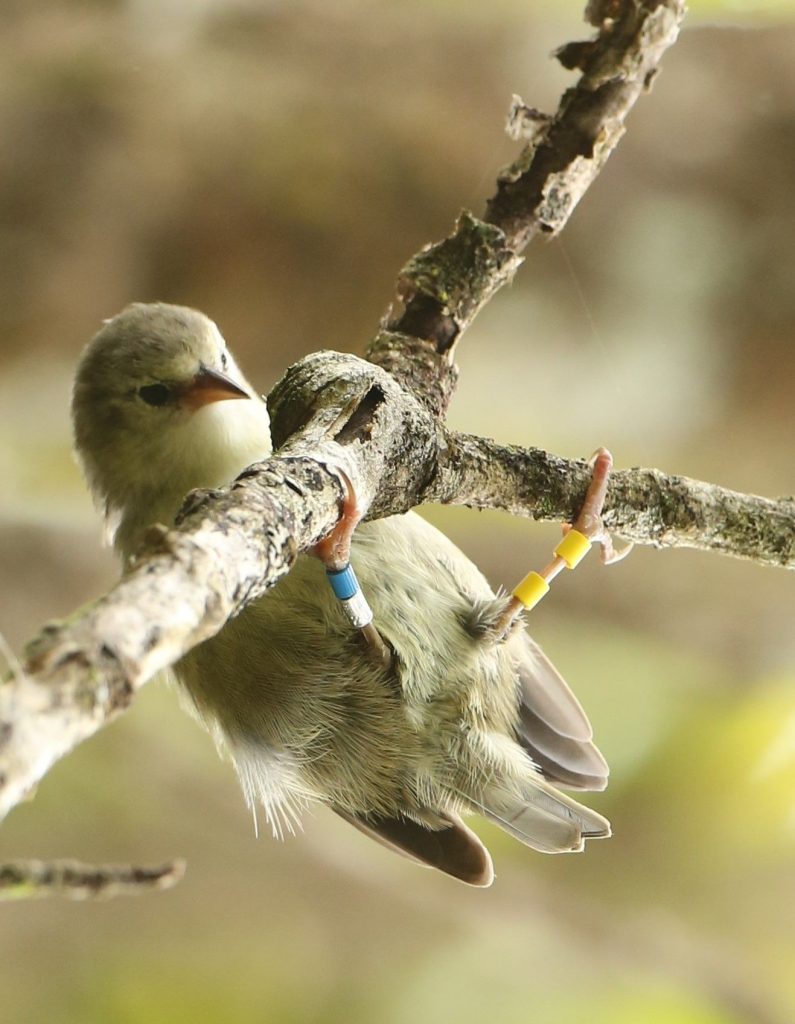08/05/23- ALL HANDS EFFORT TO SAVE KAUAʻI BIRDS FROM EXTINCTION
Posted on Aug 7, 2023 in Forestry & Wildlife, Main, News Releases, slider| JOSH GREEN, M.D. GOVERNOR |
DAWN CHANG
CHAIRPERSON |
FOR IMMEDIATE RELEASE
August 5, 2023
ALL HANDS EFFORT TO SAVE KAUAʻI BIRDS FROM EXTINCTION
(LĪHUʻE) – Bird experts on Kauaʻi are using all the tools in their toolbox to keep critically endangered forest birds from going extinct. One honeycreeper species, ʻakikiki, could disappear from the wild this year due to mosquito-borne avian malaria, with another species, ʻakekeʻe, not far behind. Warmer climates in recent years have allowed invasive mosquitoes to move to higher elevations, increasing the risk of disease to native forest birds. While conservation partners wait for final approval of a proposed mosquito birth control, also known as the Incompatible Insect Technique (IIT), they are stepping up their use of other, more traditional tools to give the birds a lifeline.
August 8 is legislatively designated as Hawaiian Honeycreeper Day, and it’s the day the team from the Kauaʻi Forest Bird Recovery Project (KFBRP) is taking to the skies to expand use of two naturally-occurring bacteria, Bacillus thuringiensis (sold commercially as “Dunk”) and Bacillus sphaericus, to prevent mosquito larvae from hatching in the uplands of Kauaʻi.
These bacteria are harmless to humans but deadly to mosquito larvae. They’re found in soil worldwide, and are widely used in organic agriculture and water treatment. While project staff have used Bacillus to control mosquito larvae for years, it has traditionally been applied by hand while hiking across the many streams and valleys of the Alakaʻi wilderness. Adding an aerial approach allows the team to address a larger area and hopefully save more birds.
Dr. Cali Crampton of KFBRP said, “The increased use of Bacillus should provide a stopgap for ʻakeke’e, allowing the species to avoid extinction long enough to benefit from the proposed mosquito birth control tool. Both Bacillus and the IIT birth control use bacteria to suppress mosquitoes. The two tools are separate but work together to address different parts of the mosquito life cycle: the Bacillus bacteria kill mosquito larvae, while different strains of the Wolbachia bacteria used in IIT result in unviable eggs that never hatch into larvae.
While conservation partners are currently focused on helping birds, people should also see benefits from increased efforts to suppress mosquitoes in Kauaʻi’s mauka regions. The combined use of organic bacteria and other integrated pest management efforts, such as fixing potholes in roads and overturning containers of standing water, should help popular hiking and camping areas in Kōkeʻe and the Alakaʻi to once again become mosquito-free.
# # #
RESOURCES
Frequently Asked Questions:
https://dlnr.hawaii.gov/dofaw/files/2023/08/Bacillus-FAQ-for-Kauai.pdf
Media Contact:
Dan Dennison
Senior Communications Manager
